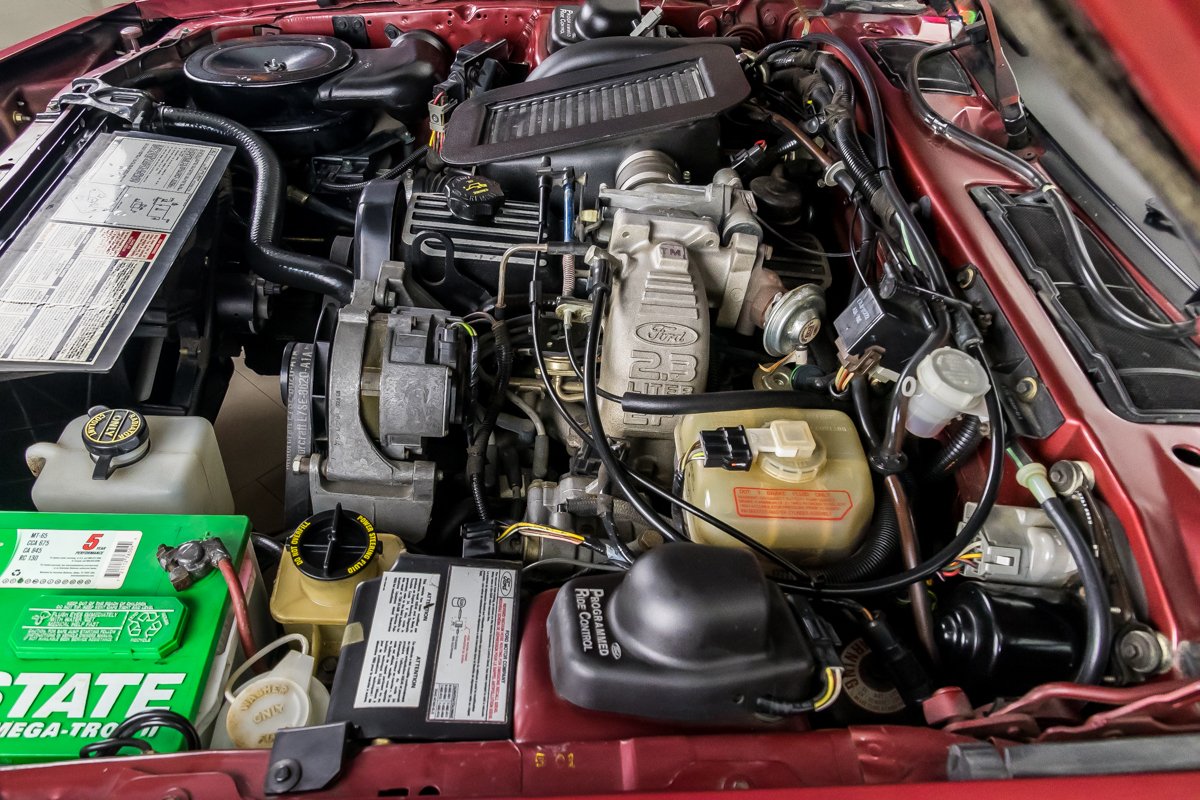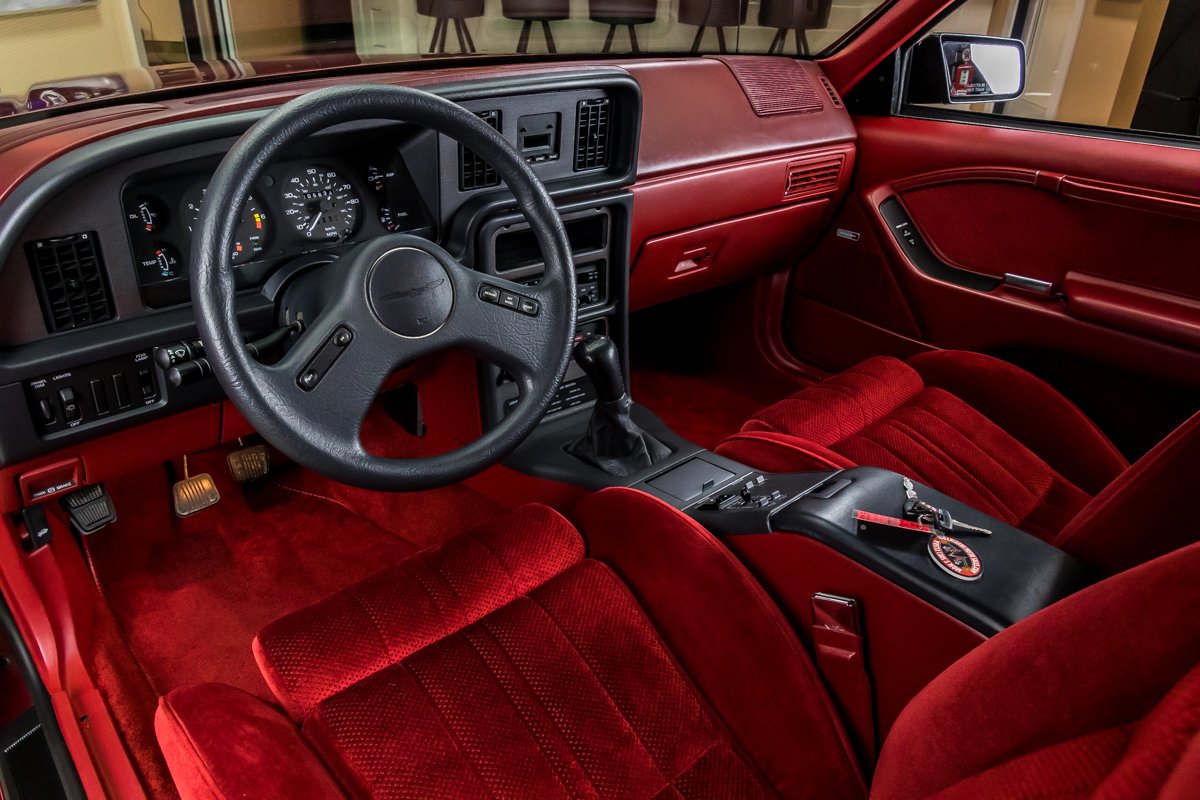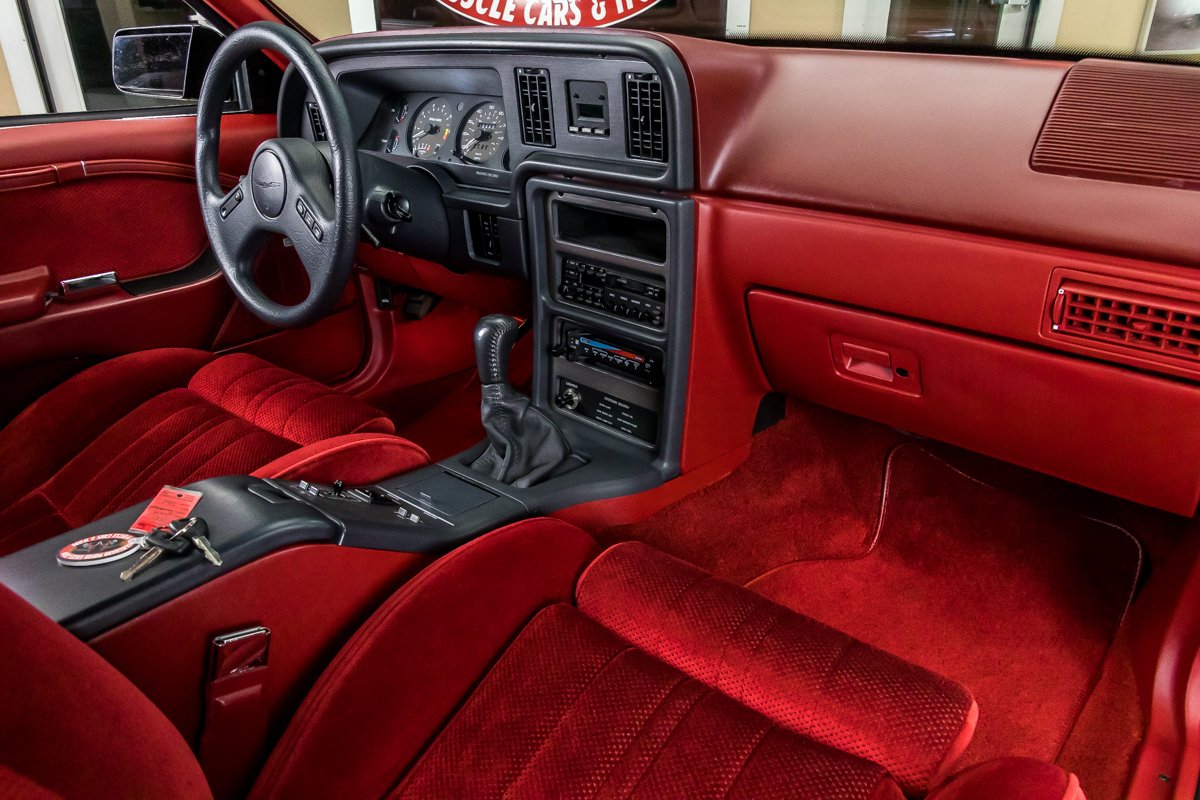The Ford Thunderbird Turbo Coupe is a treasure for the fanatical few
Jeff Korn will soon drive his 1988 Ford Thunderbird Turbo Coupe 900 miles from his home in Wisconsin to a gathering of NATO pals in Carlisle, Pennsylvania, just as he’s done each May for the past 18 years. A physics professor at Milwaukee School of Engineering, Korn is also president of the North American Turbo Coupe Organization (turbotbird.com). And yes, they really call it NATO.
The group’s 300 paying members share a mutual mission to preserve the history and enjoyment of the 1983–88 Ford Thunderbird Turbo Coupe. Korn expects Ford Nationals in Carlisle to draw 20–30 member cars.
What started as a Euro-flavored performance upgrade over the V-8 Thunderbird evolved into an advanced, well-rounded GT coupe in its last two years. The 1987–88 models, which account for nearly half of the 130,700 Turbo Coupes made, remain the most sought after—at least by the few who might be seeking them.
“There aren’t many of these left in halfway decent condition,” says Korn, who bought his Turbo Coupe 18 years ago, with 160,000 miles on it, for $800. “It was a little beat up and smoked a bit. I spent two years of all my spare time restoring it. I rebuilt the engine, put in a bigger turbo and cam, did all bodywork, and painted it. The only thing I farmed out was having the seats recovered.”
Korn says most Turbo Coupe owners modify their cars. Stock-condition models are fairly rare, but driving fun is the common denominator.
From luxo boat to racing champ



Debuting for 1983, the ninth-generation Thunderbird looked like none before it. Like the 1980–82 model, the newfangled T-Bird was still Fox platform-based, but with a four-inch shorter wheelbase (104.2 inches). A clean, wind-cheating shape earned it the nickname “Aero Bird,” with a 0.35 coefficient of drag (Cd) that was very low for the time.
The sleeker T-Bird was a hit, selling 122,000 in its first year vs. 45,000 for the 1982 model. On the highway, the slippery shape boosted fuel economy. In competition, it took Bob Glidden to four consecutive NHRA Pro Stock championships and turned NASCAR champ Bill Elliot into “Awesome Bill from Dawsonville.”
A solid start
There was little thunder in the showroom T-Bird, though. Powertrain choices included a 110-hp 3.8-liter V-6 and optional 140-hp 5.0-liter V-8. The Turbo Coupe was the performance model, aimed at imports like Audi Coupe, BMW 320i, Saab 900 Turbo, and Toyota Supra.
Ford had offered a dreadful carbureted, turbocharged 2.3-liter four-cylinder Pinto engine in various 1979–80 models. The 1983 Turbo Coupe debuted a much-improved version with port fuel injection and Ford’s EEC IV electronic engine controls. The resulting 145 hp and 180 lb-ft of torque didn’t shame the V-8 model but trounced the BMW 320i’s paltry 99 hp.
The comprehensive Turbo Coupe package included a monochromatic exterior, “articulated” bucket seats, alloy wheels, Traction-Lok differential, handling suspension, and analog gauges. For 1983 only, the sole transmission was a five-speed manual—hell had indeed frozen over.
The boosted ’Bird found a niche, accounting for 10 percent of 1983’s production. An optional automatic transmission arrived for 1984, then a bump to 155 hp for 1985, and a more modern interior in 1986. Sales crept higher each year. (The Mercury Cougar XR-7, the T-Bird Turbo Coupe’s corporate cousin, shared the turbo engine from 1983–86 but switched to the V-8 for 1987.)
Turbo Coupe, phase II

In a time when Ford has given up on passenger cars for the U.S. market (except Mustang), it may seem like a galaxy far, far away—or is that Galaxie?—when Ford would spend a quarter-billion dollars to freshen a four-year old model. The carmaker did exactly that when it gave the T-Bird a beak-to-tail makeover for 1987.
The Turbo Coupe received much of the attention. A new grille-less front fascia, plus flush headlights and side glass, made it even slicker. NACA-type hood scoops fed fresh air to the newly added intercooler. A new IHI turbocharger, which spooled up more quickly than the Garrett unit used previously (and on the 1984–86 Mustang SVO), produced 15 psi of maximum boost, up from 10 psi before.
The dual exhaust system also contributed to the higher output, now 190 hp and 240 lb-ft of torque. (Cars with the optional automatic were dialed back to 9.5 psi boost and 150 hp.) In 1987 stick-shift models, the ECU allowed maximum boost only in the first two gears, but the 1988 version fixed that with full squeeze in all forward gears. There was no knock sensor, so, as on the SVO, the driver could use a dashboard switch to dial back boost and timing when regular fuel was used instead of premium.
Handled with care
Ford went all in on the Turbo Coupe’s handling with standard Automatic Ride Control, an electronically adjustable suspension damping system. Using a central computer and network of sensors, ARC could automatically switch the dampers from normal to firm in just 40 milliseconds in response to specific conditions, including exceeding three-quarters throttle, generating 0.3 g in cornering, or 400 psi of brake pressure. The driver could also manually select firm mode with a switch. Remember, this was more than 30 years ago.
Four-wheel disc anti-lock brakes (ABS) replaced the previous model’s disc/drum setup, and 16×7-inch aluminum wheels wore Goodyear Eagle 225/VR60-16 Gatorback unidirectional tires. Many owners upgrade wheel size.

The 1987 Turbo Coupe weighed a reasonable 3,400 pounds, and the $16,805 base price was a realistic $1,700 more than the T-Bird V-8 Sport model, which lacked the high-tech chassis. Lincoln-Mercury dealers, meanwhile, were offering the oddball Merkur XR4Ti, an imported version of Ford’s European Sierra using the 175-hp non-intercooled version of the 2.3 turbo engine.
American Autobahn cruiser
The revitalized Turbo Coupe impressed critics with its strong power, precise shifter, smooth clutch, and agile handling. Motor Trend named it Car of the Year.
Car and Driver tested 0–60 in 8.0 seconds and the quarter-mile in 16.5 at 85 mph, but the 137-mph top end was quite impressive. The magazine concluded, “Judging by the world-class yardstick that Ford itself has chosen, we find the newest Thunderbird comes up short—but only a little.”
The engine won kudos for quick response but lost points for lack of refinement. “It still needs the balance shafts it apparently will never get,” wrote John Davis in his MotorWeek review.
At about 450 pounds, the all-iron turbo engine was porky for a four banger, just 50 pounds or so less than the 5.0-liter V-8.
“That’s why they last,” Korn says. “The 2.3 Turbo has a nodular crank, forged pistons and rods, and Inconel exhaust valves. It was very hard to break.”
Many Turbo Coupe owners increase boost by adding a pop-off valve in the line for the wastegate actuator. Korn runs his at 24 psi, with methanol injection to further cool the intake charge and control detonation. He says it adds up to about 325 horsepower. Some owners push it to 400 hp, but Korn wants to keep his comfortably streetable.
“I typically put on up to 10,000 miles a year,” he says. “It’s the go-to road trip car for my wife and me. It’s never left me stranded.”
Mission accomplished



Thunderbird Turbo Coupes aren’t worth much today, so restoring one would be a labor of love. Korn says regular maintenance items are available, and many Mustang parts fit. The front control arms, for example, are the same as those on the Fox-based Lincoln Continental and 1990s Mustangs. Some trim parts are very difficult to find, and Ride Control struts and shocks are almost impossible. Korn managed to find a brand new full set in 2005 for $500.
“That was a steal,” he says. “Now, I see good used ones on eBay for $1,000 each. Many people just disable the Ride Control system and switch to KYB struts and shocks.”
Korn’s upcoming trip to Carlisle will push his Turbo Coupe past the 270,000-mile mark, and he intends to keep driving it.
“I’ve probably owned 40 cars over the years, and this is my favorite, or at least in the top two,” he says. “It’s just so enjoyable to drive.”
The 1987–88 Turbo Coupe not only inspired a loyal following from the start, but also fulfilled Ford’s mission to build a bridge to the next-generation Thunderbird Super Coupe, an even more powerful and sophisticated luxury GT.





The updated dash and interior actually was actually introduced in 1985, not 1986 on the Turbo Coupe (I had an ’86 model new and about the only change from ’85 was a new center-mounted brake light).
We loved our 1985 TC w 5-speed. Wish we still had it.
It was never the same after handing down to our teen age daughter.
I keep looking for them but rare is not even close when unmolested versions are non-existent.
I have a 1984 TC 32256.6 miles (that is correct 32k miles) car has never been titled still on a cert of origin from Ford. I am looking to sell. Would need all fluids changed and belts changed (including timing belt has sat for 30 years) my dad was a ford dealer and it was his first demo. Would need all 4 new tires they are Michelin TRX. Sticker is still on the side window MSRP was $15,640 so that is my asking price. Black with red leather interior 5sp manual mewassoc2@gmail.com
hello all, son has a 88 tbird tc with a 2.3 turbo. one night it caught fire. he has replaced damage (not to much) but it will not start. does anyone know of a mechanic that knows these engines. we live in maryland..thanks Mike
I had an 88 T-Bird TC and loved it. I’m 6’3” and it fit me perfectly in every way. I still remember how sweet it handled. I’d seriously buy another if anyone has or knows of one for sale.
I have a 1983 thunderbird turbo with 18,000 miles on her she been garaged for thirty years on jacks no rust. Been thinking of selling her for several years now but want to have a person bring her back to life and not destroy it. If interested please contact me